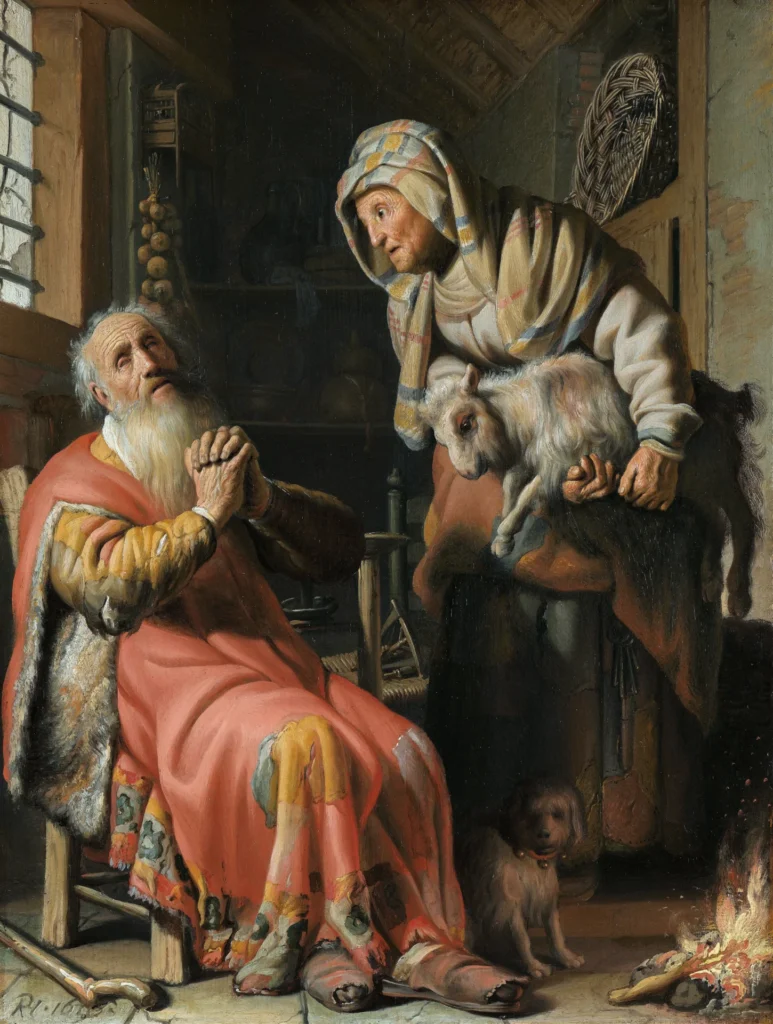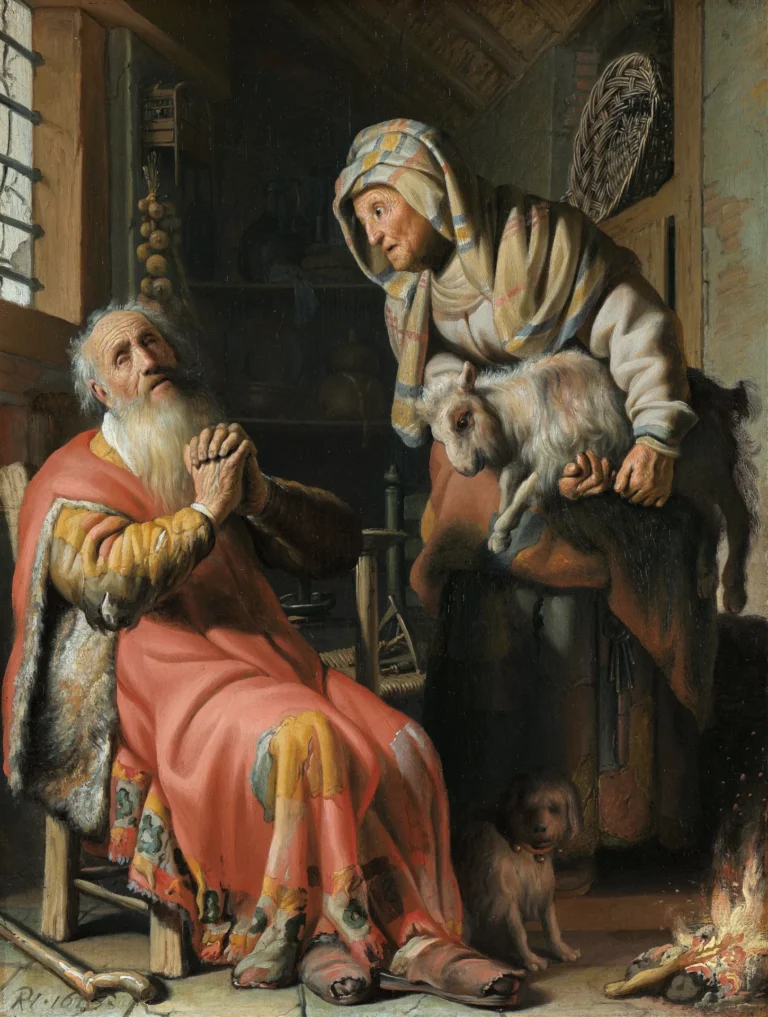Tobit and Anna with the Kid
Created in 1626, Tobit and Anna with the Kid is an early masterpiece by Rembrandt van Rijn. It illustrates a poignant moment from the Book of Tobit, where the blind Tobit accuses his wife Anna of theft, amidst the trials of their life. This oil painting, rich in color and emotion, captures the artist’s emerging storytelling ability and deep understanding of human experience, setting the stage for his future works.
Year 1626
About the Artwork
The painting represents a dramatic scene from the Book of Tobit, significant for its exploration of marital tension and human despair. Tobit, stricken with blindness, mistakenly accuses his wife Anna of bringing home a young goat as payment for her work, thinking she has stolen it. In the painting, we see Anna's composed demeanor, holding the goat with a small dog representing loyalty at Tobit's feet. These contrasting emotions between Tobit’s despair and Anna’s calm create a compelling narrative. Rembrandt likely drew from personal influences, with reports that his mother may have modeled for Anna, enriching the piece with authenticity. This work illustrates not just a biblical story but also the personal struggles of humanity, showcasing Rembrandt’s early but profound grasp of emotional depth.
Did You Know
At just 20 years old, Rembrandt created Tobit and Anna with the Kid. showcasing an early mastery of the emotional depth and narrative complexity that would define his later works.
The painting captures a moment from the Book of Tobit, a lesser-known section of the Old Testament, reflecting Rembrandt’s interest in scriptural themes and stories of human hardship.
Rembrandt’s mother is believed to have posed for Anna, adding a personal touch and authenticity to the emotional scene, reflecting the artist’s early engagement with familial themes.










